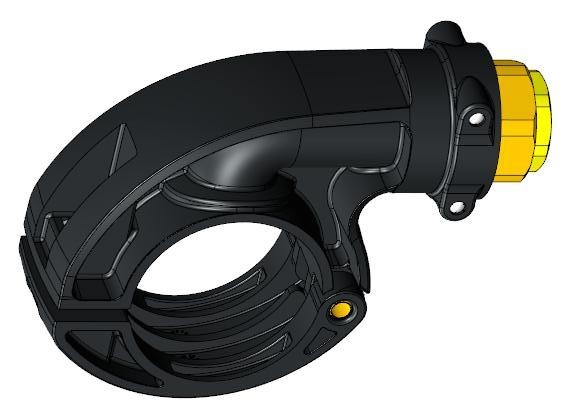This was not the first eco-design experience implemented by Parker-Hannifin Manufacturing (FSCE division). “We had already used the lifecycle analysis (LCA) method to design a new connector for use in liquid networks”, says Richard Boulom, R&D project manager at Parker- Hannifin France. LCA makes it possible to quantify the environmental impacts of new products, but Parker wanted a more comprehensive and structured approach to guide its design team. With its comprehensive approach and simple implementation, the eco-design methodology developed in the mechanical sector provided a means to meet these objectives and allowed Parker to complete its initial approach.
Unquestionable improvements
After one year of development within Parker-Hannifin FSCE, significative improvements have been obtained: connectors thickness reduction and creation of a new range of connectors (straight connectors, elbow connectors, T connectors) with diameter of 50 mm and with reduced weight thanks to the use of aluminium and composite material (polyamide and glass fibre). The weight of the bi material branching flange and of the connectors was reduced by 30%. “This was achieved with performance similar to or even better than former equivalent products”, says Richard Boulom. When taking into account the complete life cycle of a compressed air network, those improvements give a certain financial advantage to the new product. In fact this overall approach has been extended to other areas, including packaging. “By optimising the design, we managed to increase the mass of connectors in one single box”, concludes Richard Boulom. Further to this experiment, Parker-Hannifin FSCE wished to extend the eco-design approach to the development of other various projects.



